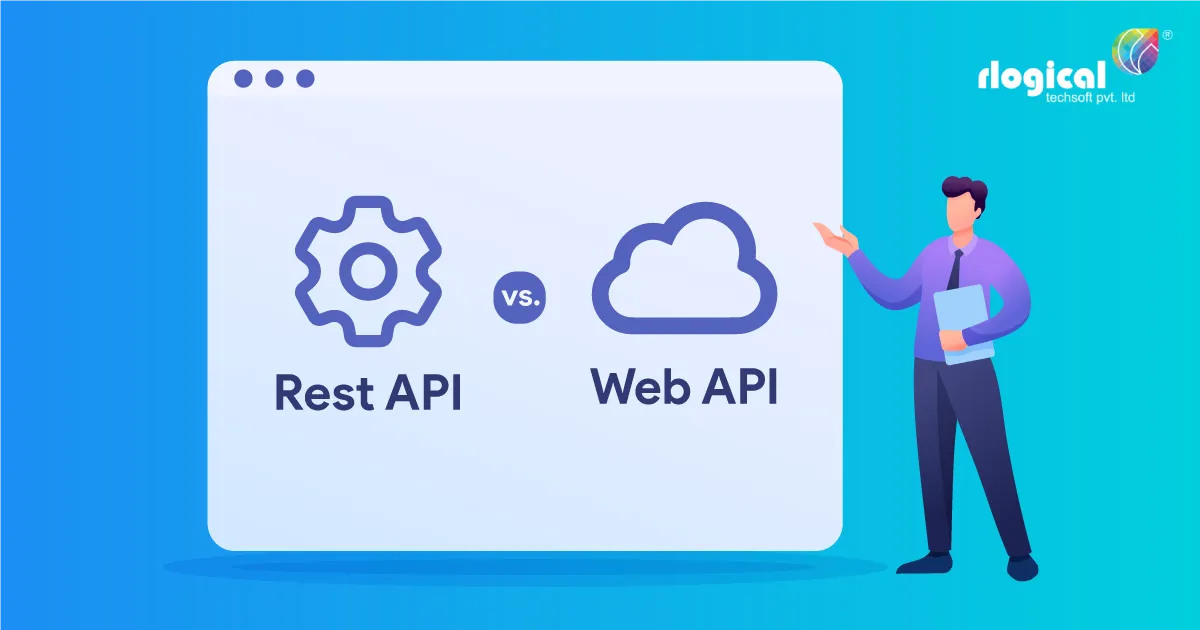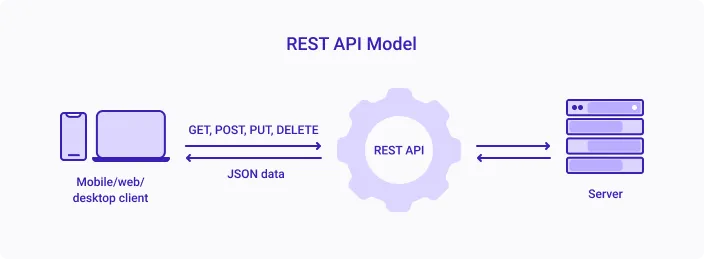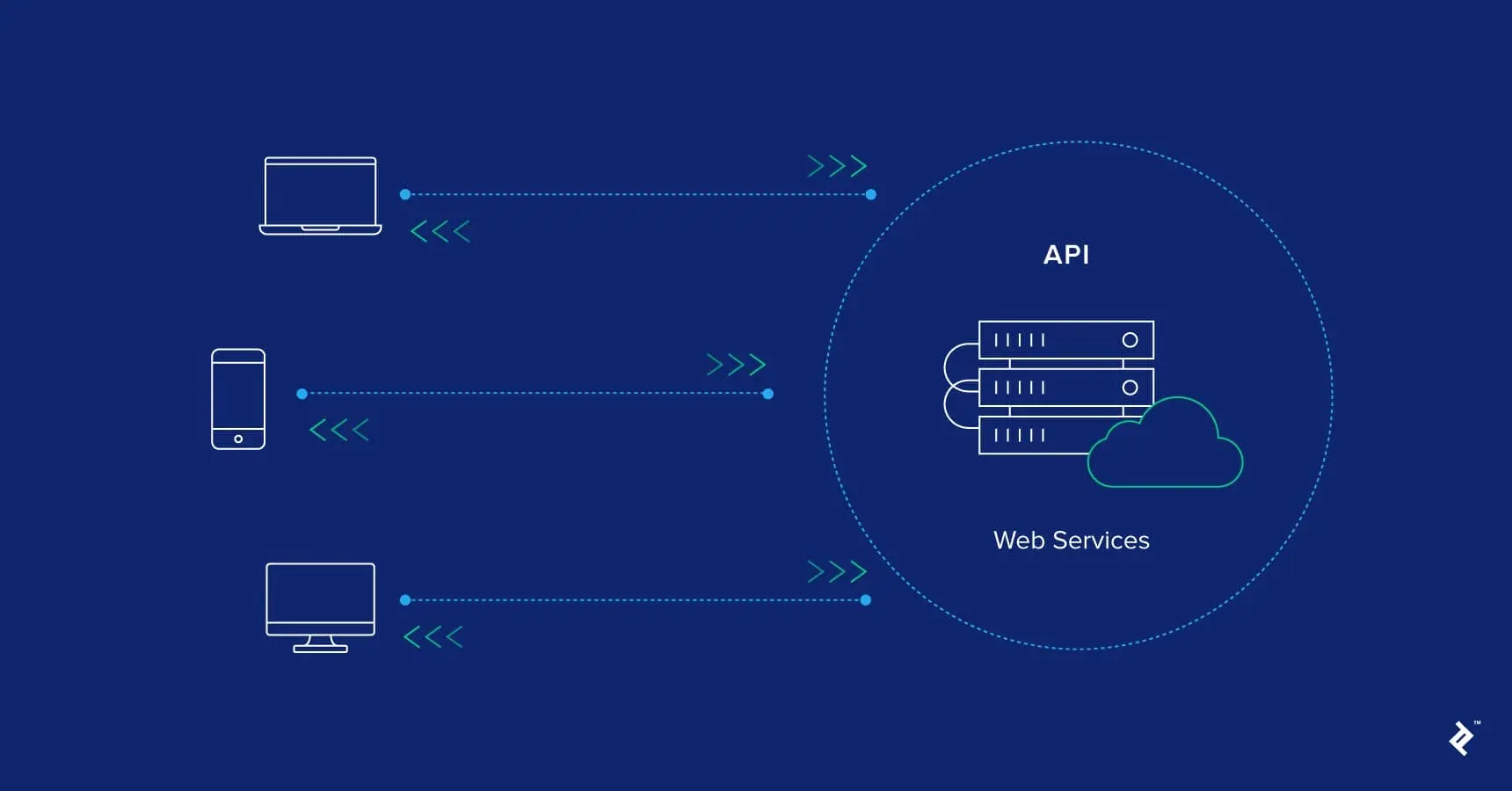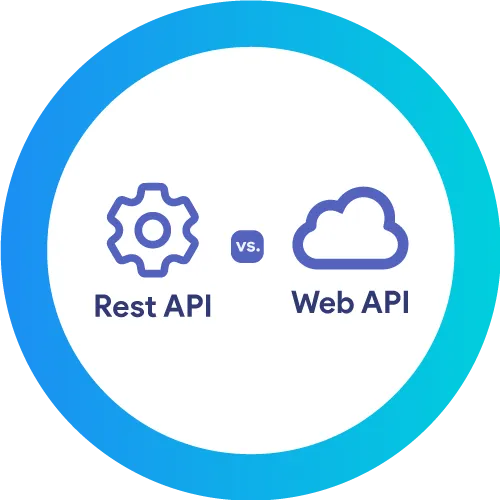
We often come across several confusing words in this world of web development, allowing them to pass. These include REST API, Web API, and SOAP API. Here we have mentioned their differences.
What Do You Mean by REST API?

Image Source: Google
We will first try to comprehend what REST is. REST isn’t a tool, protocol, or library; and instead, it is a web service providing a channel of communication between computers or systems on the web. It happens to be a standard used as an architectural way of creating a network-based software system.
Consequently, a REST API happens to be an application interface backed by REST’s architectural style. It refers to services, tools, or programs based on the architectural principle of REST.
Although it is possible to use REST on virtually any protocol, it uses HTTP when utilized for web APIs. REST APIs’ primary advantage is that they offer more flexibility. Data will not be constrained to methods or resources when it comes to REST APIs. Consequently, it can make several types of calls, modify structurally with the ideal application of hypermedia, and return different data formats.
Why Chooses REST?
- The initial reason happens to be its scalability. This particular property helps to make the protocol quite popular out there. The reason for this is client and server separation. The product can be scaled without much difficulty with the assistance of expert developers.
- One more reason behind the popularity of REST is its flexibility and portability. With the assistance of REST, it will be possible for one to have indispensable data covered in just one request. Besides this, it is also quite simple to transfer the data between different servers. It likewise provides you with the access to make alterations at any moment on the database. It is also feasible to host backend and front-end on different servers.
- One more reason to opt for REST happens to be the independence brought about it. The separation between client and server makes it very simple for the protocol to work independently on various development projects. The good thing is that it can also adapt to various syntax and working platforms, providing you with plenty of opportunities to work on various projects linked with development.
REST API Advantages
- It is quite simple to learn REST API.
- With its existence, one can also organize complex applications into a simple resource.
- It is possible to manage High load using an HTTP proxy server.
- It is cleaner and also very simple to explore.
- Makes it quite easy for fresh clients to work upon the applications of others irrespective of whether it has been specifically designed for the purpose or not.
- Since it depends on codes to a great extent, it can be used for synchronizing data within websites without any issue.
- It likewise provides a flexible approach by serializing information in XML or JSON format.
- Rest api allow the user to access identical standard data and objects, unlike web services that are SOAP-based.
- It likewise provides protection using OAuth protocol for confirming your REST requests.
REST API Examples
- Twitter offers a REST API that can be queried by any developer for sourcing the most recent tweets.
- Instagram API allows your apps to retrieve user photos, tags, accounts, and so forth.
- GitHub likewise provides super REST API that you can use for performing actions like following GitHub problems, monitoring user activity, and creating repositories from your application.
What Do You Mean by Web API?

Image Source: Google
Web API refers to an open-source framework used for writing HTTP APIs. It is essential to bear in mind that it is not a technology but a concept. Web app development services can create Web API by using different types of technologies, including Java, .net, and so forth. Web API might be RESTful as well. The protocol specification is implemented by Web API, and in this way, it includes concepts such as URLs, caching, versioning, and request/response headers.
Web API Business Benefits
- Business logic centralization will help to reduce your endeavor. Consequently, it will be possible to maintain business information consistently.
- It happens to be open-source.
- It makes use of low bandwidth (JSON or XML data). HTML content can also be passed by us if needed.
- Web API Controller pattern happens to be almost identical to MVC Controller. Therefore, it is quite simple to maintain and comprehend.
- Although not an integral part of MVC Framework, Web API is the ASP .NET Development framework’s part. As a result, there is no other dependency for deployment and development.
Web API Technical Benefits
- It does not involve any tedious configuration.
- Development by making use of Web API makes isolation from UI Development.
- Being a lightweight architecture, it is ideal for devices having restricted bandwidth like smartphones.
- It likewise supports MVC features like filter, model binders, controllers, action results, and routing for dependency injection, which helps to make it more simple and robust.
- Web Api provides support for OData.
- It makes use of URLs to identify information resources.
- Web Api consists of a body that one can use for any kind of information (not only XML content, unlike the one enforced by SOAP).
- Likewise comes with message headers that are extremely descriptive and meaningful.
Read More: Complete Guide to Building Robust APIs
Web API Examples
- Google APIs – Google is going to set the benchmark in all fields of contemporary technology. Their APIs consist of YouTube API, Google Analytics API, Google Font API, and so on.
- You will also come across social media APIs like Facebook APIs, Twitter API, LinkedIn API, and Scoop.it API.
What Do You Mean by SOAP API?
Simple Access Protocol (SOAP) happens to be a standard communication or messaging protocol system that enables procedures using different OSs like Linux and Windows for interacting and communicating using XML and HTTP. Dedicated Web app developers have designed SOAP APIs to create, update, recover, and delete records like passwords, accounts, custom objects, and leads.
Differences Between SOAP API and REST APIs
- REST API is essentially an architectural style, and therefore, it does not have any official standard. SOAP API is a protocol, and therefore, it happens to be an official standard.
- REST API can use several standards, including URL, XML, HTTP, and JSON. SOAP API is based mainly on XML and HTTP.
- REST API uses fewer resources and bandwidth since multiple standards are deployed by it. SOAP API takes more bandwidth since it makes use of XML for creating payloads.
- REST API uses URL exposure like @path for exposing business logic. SOAP API makes use of services interfaces for exposing business logic.
- REST API is convenient with JavaScript and enables simple implementation. SOAP API is likewise convenient with JavaScript; however, it does not support greater implementation.
- REST API makes use of Web App Description Language. On the other hand, SOAP API employs Web Services Description Language.
- REST API happens to be more secure because it can boast of HTTPS and SSL. On the contrary, SOAP API features SSL only.
Performance Between REST APIs, Web APIs, and SOAP APIs
- REST APIs: Ideal for modern, lightweight applications that prioritize ease of use, flexibility, and performance. They are a great choice for public-facing APIs where a large developer community is desired.
- Web APIs: A broad term encompassing various communication interfaces. They offer more flexibility than REST APIs but might require more development effort. Use them when you need a powerful and adaptable solution but don’t mind exploring different technologies.
- SOAP APIs: A mature and secure option suited for complex enterprise applications requiring high data integrity and strong security features. However, SOAP APIs can be more verbose and slower than REST APIs.
Features key points of REST API vs. Web API vs. SOAP API
| Feature | REST API | WEB API | SOAP API |
|---|---|---|---|
| Architecture | RESTful principles | Flexible | Standardized |
| Data format | JSON, XML | Any | XML only |
| Security | Moderate | Varies | High |
| Complexity | Lower | Moderate | Higher |
| Use case |
Public APIs, mobile |
Diverse | Enterprise apps |
Conclusion of Rest API, Web API and SOAP API
Rahul Panchal
Rahul Panchal is the Founder & Managing Director at Rlogical Techsoft Pvt. Ltd. He is a pioneer tech enthusiast who has assisted diverse enterprise solutions with a fresh perspective over the years. From integrating technologies like Full-Stack, .NET, Flutter & PHP, he has harnessed custom web or hybrid mobile app development projects. His creative outlook on the latest models of AI, ML, blockchain, and IoT, has made various businesses attain leading-edge success.
Related Blog
Categories
- All
- AI Development Services
- Amazon Web Services (AWS)
- ASP.Net Development
- Azure Web App
- Big Data Analytic
- Customize
- Digital Marketing
- Drupal Development
- E-commerce web development
- Education Mobile App Development
- Enterprise Application
- Event Management App Development
- Fintech
- Fitness App Development
- Food Delievery
- Front-End Development
- Grocery App Development
- Healthcare App Development
- Hire Dedicated Developers
- Hotel Booking App
- IT Industry
- JavaScript Development
- Mobile App Development
- On Demand App Development
- On Demand Healthcare App Development
- PHP Development
- POS Software Development
- Real Estate Mobile App Development
- Retail Business App Development
- Salesforce
- Social Media Development
- Software Development
- Technology
- Transportation App Development
- UI/UX Design
- Web Design
- Web Development
- Web Services
- Web/Data Scraping Services
- WordPress




 Rahul Panchal in API Development
Rahul Panchal in API Development 





